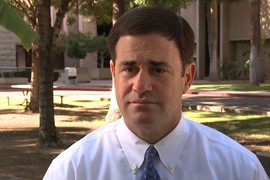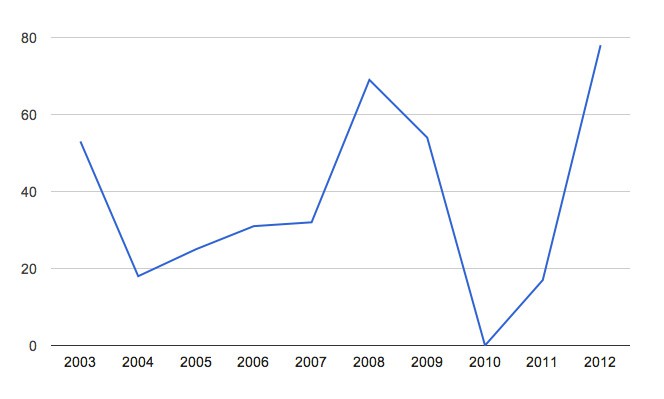Cronkite News has moved to a new home at cronkitenews.azpbs.org. Use this site to search archives from 2011 to May 2015. You can search the new site for current stories.
Proposition 118 would stabilize trust land payouts to schools
PHOENIX – A fund fed by selling and leasing state trust land is supposed to provide contributions each year to public schools and a dozen lesser beneficiaries. But the results of late have been far from reliable, including no contribution in fiscal 2010.
The problem, state Treasurer Doug Ducey says, is the formula used to calculate payments from the Permanent Land Endowment Trust Fund, which he said holds about $3.7 billion at present. Continuing to use that formula would produce several more years with no payouts in the coming decade, according to Ducey’s office.
“When you have $3.7 billion in the bank, properly invested, you don’t one day go to your children and say, ‘We don’t have any money,’” he said.
His solution, contained in Proposition 118, is calculating the annual distribution at 2.5 percent of the average market value of the fund for the past five years.
It would replace a formula that relies on the fund’s five-year average rate of return less a federal inflation rate adjusted for changes in consumption patterns and multiplied by the fund’s average market value over five years.
That formula produces zero payouts when the adjusted inflation rate is equal to or greater than average returns.
“The old formula to calculate distribution is critically flawed,” Ducey said.
Money in the trust fund comes from millions of acres of land placed in trust by the federal government when Arizona became a state. The Arizona State Land Department leases and sells that land primarily to benefit K-12 education but also for 12 other beneficiaries.
The fund has generated about $377 million for K-12 education over the past decade, but annual payouts have ranged from about $78 million in fiscal 2012 to nothing in fiscal 2010.
The new formula could produce smaller payouts than the current formula in certain years, but Ducey said stability would make the change worth it.
“It takes away the unevenness and the inability for schools to budget,” he said.
The new formula would be in place from fiscal 2013 to fiscal 2021. Barring another referendum or legislative action, the state would revert the current formula after that.
According to the Treasurer’s Office, the new formula would provide $60 million to $80 million of grants each year. For fiscal 2013, it projects, trust beneficiaries would receive around $75 million under the new formula and between $25 million to $30 million under the current formula.
Projected payouts using the current formula range from $170 million in fiscal 2015 and nothing from fiscal 2017 to 2021, assuming moderate returns on investments, according to the Treasurer’s Office.
Uses for the money in K-12 schools include teacher salaries, programs that help students prepare for the AIMS test, reducing dropout rates and professional development.
Other beneficiaries of the trust fund include public universities, state hospitals and schools for the deaf and blind.
Supporters of Proposition 118 include Gov. Jan Brewer, the Arizona Chamber of Commerce and Industry and the Arizona Education Association, the state’s largest teachers union.
There is no organized opposition. However, some lawmakers voted against referring the measure to the ballot.
Rep. Jack Harper, R-Surprise, said the new formula would increase payments from the trust fund in the near term, while a study commissioned by the Treasurer’s Office found there would be a spike in grants if the old formula returns after a decade.
Payouts that are too generous would hurt the trust fund’s value and reduce payments in the future, he said.
“The change is moving up the compensation that could be spread out and would have meant to be for the future generation,” Harper said.
But Andrew F. Morrill, president of Arizona Education Association, said a steady stream of money from the trust fund would save teachers’ jobs and build educators’ confidence.
“Teachers in Arizona, and everybody working in our schools, have been forced to wonder with a great deal of concern each year about the money coming into our public schools,” Morrill said. “Prop. 118 may be a small thing in the huge picture of the cuts to Arizona schools, but it is a step in the right direction for some stability.”








